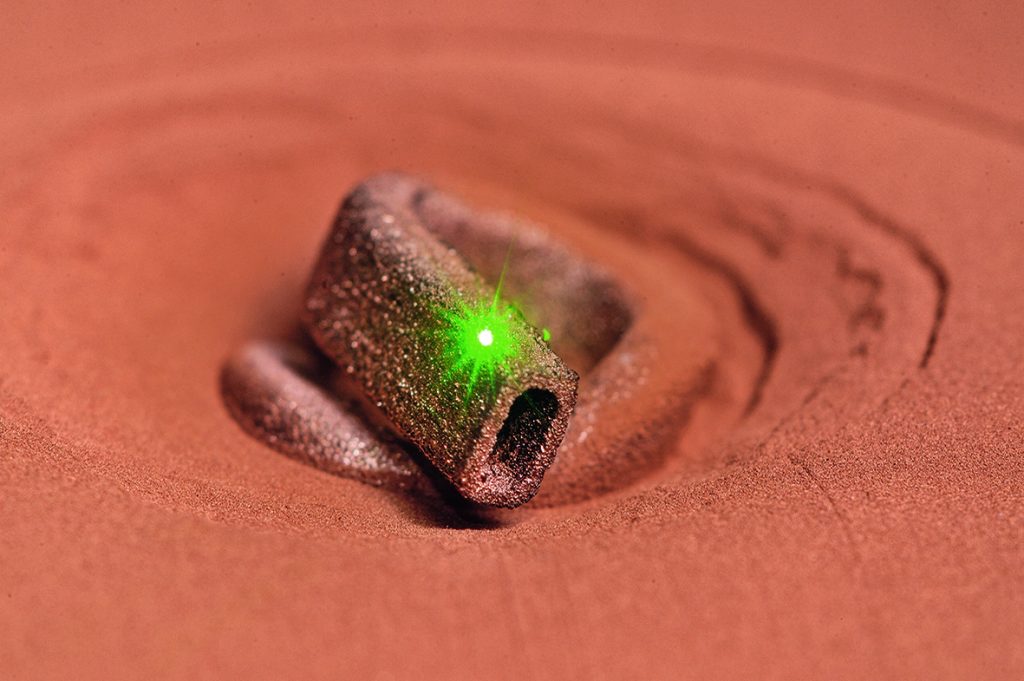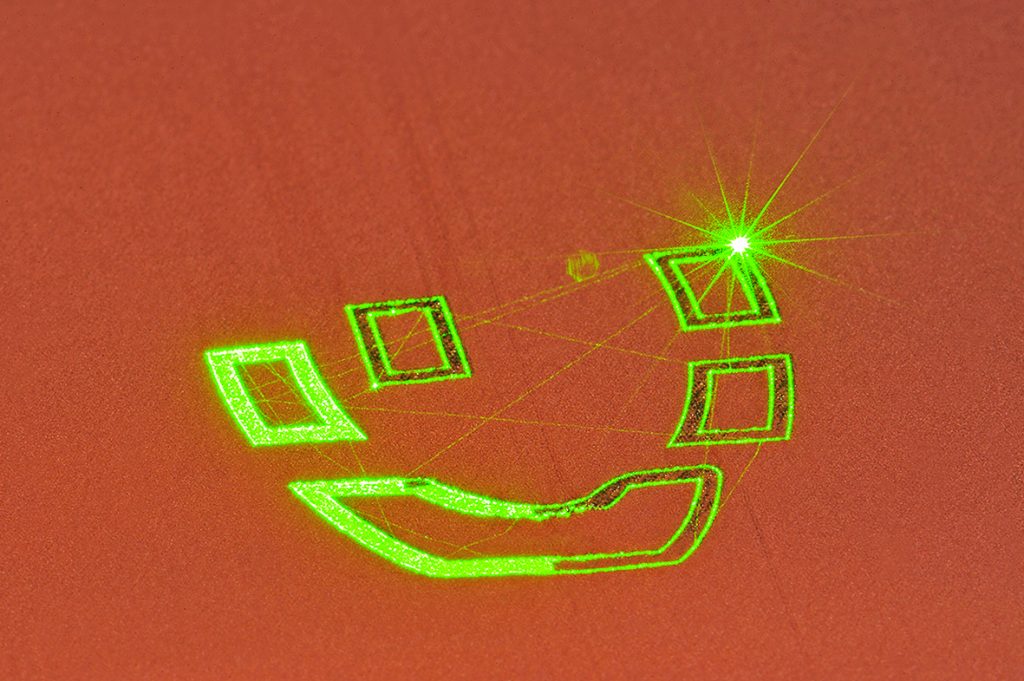Known for its malleability and typically ductile composition, copper is a seemingly ideal material for metal 3D printers. In addition, the metal exhibits a level of thermal conductivity second only to silver, and high electrical conductivity making it desirable for industrial applications.
It is this conductivity however that makes the metal notoriously difficult to work with inside a 3D printer. The metal is simply too good at transferring the heat applied by a laser beam.
“Depending on surface properties,” explains Daniel Heussen, research fellow in the Rapid Manufacturing group at Fraunhofer ILT, “pure copper reflects up to 90 percent of laser radiation in conventionally used wavelengths of 1µm.”
To combat copper reflection, Heussen and associates at the leading German research institution are launching project “SLM in green” that seeks to change the way 3D printers make objects from a bed of copper powder.

Given the green light
3D printing of copper has previously been achieved using electron beam melting (EBM) and Optomec’s trademark Aerosol Jet technology. Private space exploration company Aerojet Rocketdyne also revealed that RL-10 rocket thrust chambers were 3D printed using selective melting (SLM), the same technology to be enhanced in the Fraunhofer ILT project.
By comparison to existing methodologies, project SLM in green is aiming for “notably higher detail resolution as well as greater cost efficiency”. The key, perhaps tellingly, is in the color of the laser.

The devil is in the detail
SLM lasers typically operate within the infrared spectrum of light, which is why copper’s low absorptivity occurs and the light’s energy does not efficiently melt the metal.
In a green laser, the wavelength is significantly longer, at 515 nm in comparison to 1µm. According to ILT “This means that less laser power output is needed for a stable process. Furthermore, the laser beam can be focused more precisely, allowing it to manufacture far more delicate components using the new SLM process.”
Heussen adds, “We are hoping for a more homogeneous melt pool dynamics so that we can build components with high material density and achieve other positive effects, such as a higher detail resolution.”
The project is expected for completion mid 2019 and is funded by German Federation of Industrial Research Associations (AiF).
Read more of the latest additive manufacturing research in our free newsletter, on Facebook and on Twitter.
Looking to advertise research jobs? Register on our specialist site here.
Featured image: Preview of Fraunhofer’s SLM in Green copper printing project. Photo by Fraunhofer ILT, Aachen, Germany.



